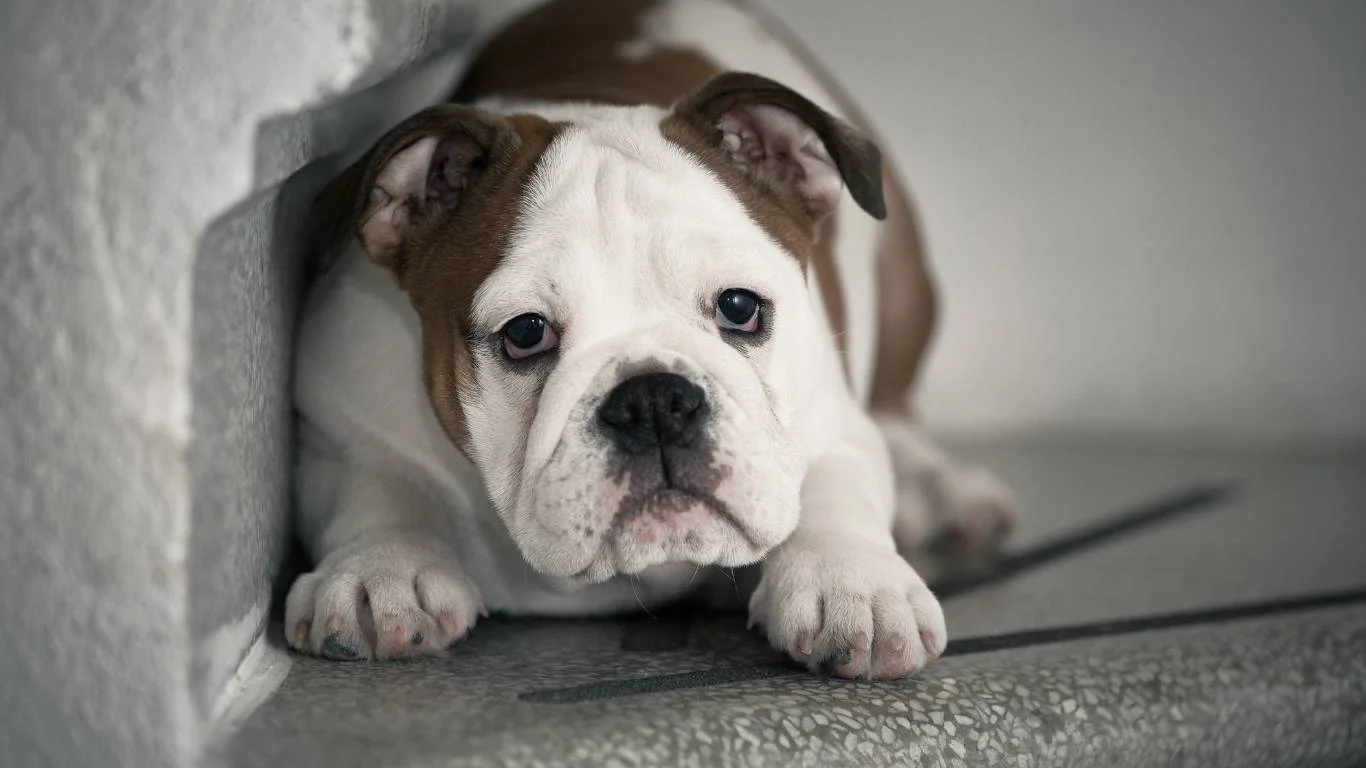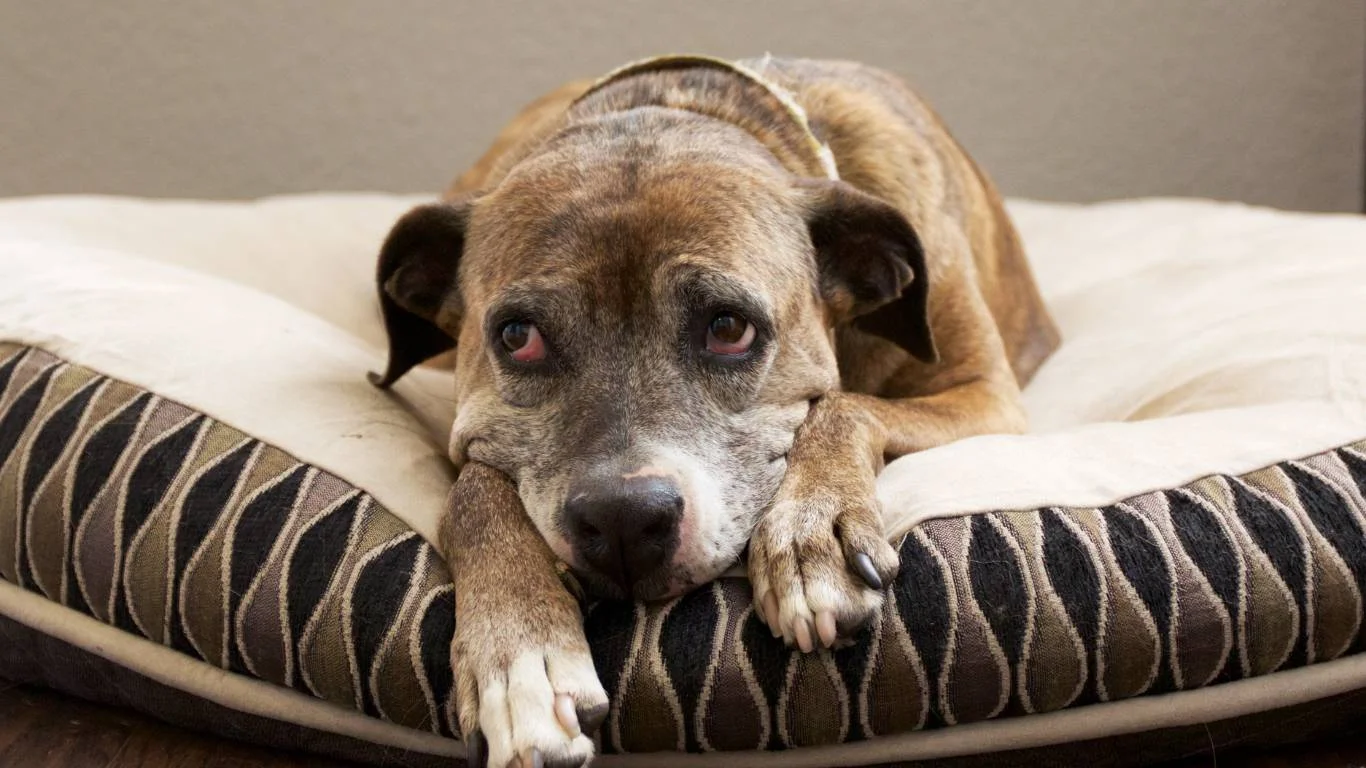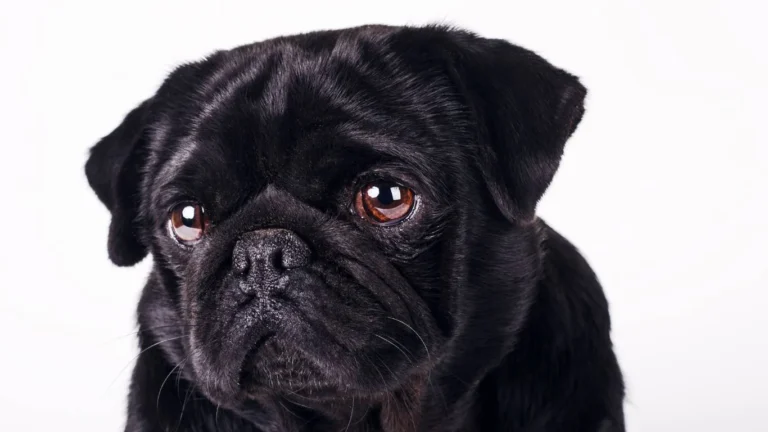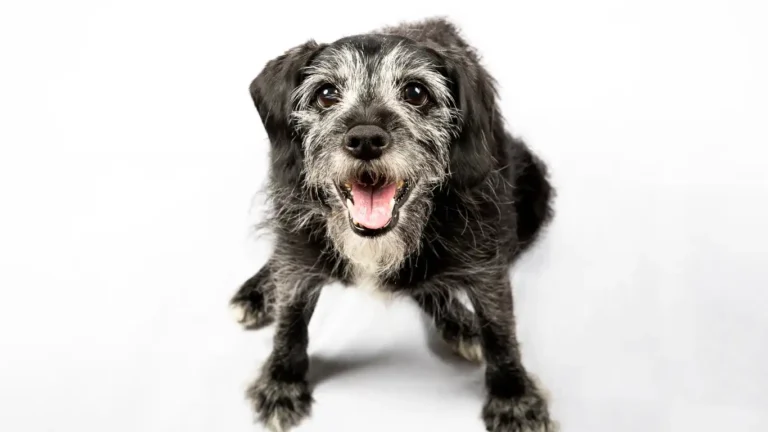Warning Signs of Cognitive Decline in Senior Dogs You Shouldn’t Ignore
It’s tough to watch our dogs get older. As someone who’s spent years in veterinary clinics with a focus on pet nutrition, I’ve met so many loving pet parents who didn’t even realize their senior dogs were showing early signs of cognitive decline. It sneaks up on you. One day your pup forgets where their food bowl is, the next, they’re staring at a corner for no reason. It’s heartbreaking—but it’s also manageable if we catch it early. This guide is for anyone who’s noticed subtle (or not-so-subtle) changes in their aging dog’s behavior and isn’t sure what it all means.
Understanding Canine Cognitive Dysfunction (CCD)

So first things first: what we’re talking about here is officially called Canine Cognitive Dysfunction, or CCD for short. Think of it as the doggy version of Alzheimer’s or dementia. And yeah, it’s just as real and just as impactful.
What breaks my heart the most is when I hear folks say, “Oh, he’s just getting old,” as if that explains away the confusion, pacing, or accidents in the house. Sure, age plays a part, but there’s often more going on beneath the surface. Just like with people, aging dogs experience changes in brain chemistry. Neurons degenerate, oxidative stress kicks in, and neurotransmitter levels can drop.
But how common is it?
Honestly? More common than most people think. Some studies suggest that by age 10, more than 25% of dogs show at least one sign of cognitive decline. By age 15, it jumps to over 65%. I’ve seen it in dogs as young as 8, especially in certain breeds.
Subtle Signs of Cognitive Decline in Senior Dogs

If you’re reading this and nodding your head, you’re probably already noticing things. These signs often start small, but they add up fast. Here’s a breakdown of the red flags I often tell clients to watch for:
1. Disorientation or Confusion
This is a biggie. You might find your dog standing in a corner, staring at the wall, or getting “lost” in familiar rooms. I remember this sweet Golden Retriever, Molly—she used to forget which door led outside and would just wait by the linen closet.
2. Changes in Sleep-Wake Cycles
Senior dogs with CCD often flip their internal clocks. They’re restless at night and sleep more during the day. And I don’t mean a nap here and there—I’m talking wide-awake pacing at 2 AM. If you’ve been woken up by a panting, anxious dog in the middle of the night, this might be why.
3. House Soiling
This one can be frustrating. Dogs who’ve been perfectly house-trained their entire lives may suddenly start having accidents. Not out of spite, not because they’re lazy—but because their brain isn’t signaling them correctly anymore.
4. Changes in Social Interaction
Some dogs become clingier; others withdraw. I worked with a little senior Shih Tzu who had always been a social butterfly—but once CCD started, she didn’t even want to be petted anymore. It was heartbreaking for the family.
5. Decreased Activity or Loss of Interest
It’s not just physical aging that slows them down. Mentally, they start disengaging from play, walks, and even eating. That’s where my nutrition focus comes in—sometimes we can use diet to help spark interest again.
Why Early Detection of Cognitive Decline Matters

Here’s the thing: early intervention can make a huge difference. I’ve seen dogs who, with the right care plan, regain some of their spark. Not all of it, maybe, but enough to enjoy life again.
Veterinary guidance is crucial, and this is where I always remind clients—don’t self-diagnose. It might be CCD, but it could also be pain, thyroid issues, or even vision loss. I once had a case where we thought a dog was losing her memory, but it turned out she just had a serious eye infection that made everything look blurry. Imagine how confusing that must’ve felt for her.
Common tests your vet might recommend:
- Blood work to rule out metabolic conditions
- Neurological exams
- Behavioral assessments and questionnaires (yes, there’s a scoring system!)
The earlier you speak to your vet, the better your odds of improving your dog’s quality of life.
Real-Life Nutrition Tips for Brain Health
Here’s where I get really passionate. Brain health and diet are linked. There’s no magic kibble that “cures” CCD, but certain nutrients support cognitive function. In my work, I’ve seen huge improvements when we tweak diets or add the right supplements.
Top nutrients that support brain health:
- Omega-3 fatty acids (especially DHA)
- Antioxidants like Vitamin E, C, and selenium
- B Vitamins for cellular function and energy metabolism
- Medium-chain triglycerides (MCTs) for alternative brain fuel
There are even veterinary-prescribed diets tailored for cognitive health. If you’re curious, talk to your vet about brands like Hill’s b/d or Purina NeuroCare. I’ve had clients tell me it was like someone turned the lights back on in their dog’s eyes.
Behavioral Enrichment for Aging Minds

One thing I always tell dog parents—don’t underestimate the power of mental stimulation. Just like with humans, keeping the brain engaged can help slow cognitive decline in senior dogs. And no, it doesn’t have to be complicated or time-consuming. Even five minutes a day can make a difference.
I remember working with a Border Collie mix named Leo. He had started showing mild signs of disorientation, but when we introduced daily puzzle toys and scent games, it was like a light switch flipped. He perked up, started engaging with his family more, and even seemed less anxious overall.
Simple enrichment ideas for senior pups:
- Food puzzles – Keeps them thinking while they eat
- Snuffle mats – Great for nose work without being too physically demanding
- Training refreshers – Practice old cues like “sit” or “touch”
- Interactive feeders – Slows eating and encourages problem-solving
- Scent walks – Let them lead with their nose, even if it’s just in the backyard
The goal isn’t to exhaust them—it’s to engage them. Make it fun, keep it low-pressure, and always end on a positive note.
Consistency and Routine: Why They Matter

One of the biggest takeaways I’ve learned over the years is how much senior dogs rely on routine—especially those dealing with cognitive decline. When the brain is already fuzzy, sudden changes in environment or schedule can cause real stress.
I once helped care for a sweet Lab named Daisy whose symptoms worsened dramatically after her family moved homes. Nothing else had changed—diet, meds, love levels—all the same. But that shift in her familiar environment really threw her. We had to work slowly to rebuild her sense of safety with consistent walks, feeding times, and even the same bedtime wind-down routine every night.
Tips for creating a stable routine:
- Feed meals at the same times daily
- Stick to consistent walk schedules
- Keep their bed and essentials in the same location
- Limit rearranging furniture if possible
- Use nightlights to help them navigate after dark
Pro tip: If you need to make changes—do it gradually. Whether you’re switching food or altering their environment, slow transitions are key.
When to Consider Medical Intervention

Let’s talk real talk: sometimes lifestyle changes alone aren’t enough. And that’s okay. There are actually medications and supplements specifically designed to help manage cognitive dysfunction in dogs. I’ve worked with vets who’ve seen dramatic improvements once a pup starts on the right treatment plan.
Here are a few that might come up in conversation with your vet:
- Selegiline (Anipryl) – A prescription med that supports dopamine levels in the brain
- SAM-e – A supplement that helps protect brain cells and supports mood
- Melatonin – Can help with sleep disturbances (but always vet-approved first)
- Neutraceutical blends – Often contain antioxidants, omega-3s, and more
One of the most memorable cases I’ve seen was a senior terrier named Buddy. His pet parents were hesitant about trying medication, thinking it was “just old age.” But once the vet added Selegiline to his routine, we saw a noticeable boost in his energy and alertness within a few weeks.
Medication isn’t a magic fix—but it can be part of a holistic approach when combined with diet, routine, and enrichment.
Supporting the Family Through It All
This part’s close to my heart because I’ve seen how emotionally heavy it can be to watch a beloved dog change. The confusion, the accidents, the personality shifts—it’s a lot. And I always remind pet parents: you’re doing your best, and you’re not alone.
I once had a client tearfully ask if her dog still remembered her. That hit me hard. The truth is, even if your pup can’t show it the same way, that bond is still there. They feel your love in how you show up every day—whether it’s by hand-feeding their dinner or guiding them to bed when they seem lost.
Tips for caregivers:
- Give yourself grace—it’s okay to feel frustrated sometimes
- Keep a journal to track changes in behavior (this helps at vet checkups too)
- Lean on your vet team for support—we’re here to help
- Consider joining a support group online or locally
And don’t forget to take care of yourself, too. Your well-being matters just as much, and caregiving is hard emotional work.
How to Talk to Your Vet About Cognitive Changes
If you’re noticing signs of cognitive decline in your senior dog and wondering how to bring it up, here’s what I suggest. Start with a list—note what behaviors you’ve seen, when they started, and how often they happen. The more specific, the better. Vets love data. (Seriously, we do!)
Use words like:
- “She’s waking up at night and pacing the hallway.”
- “He stares at walls or gets stuck behind furniture.”
- “She’s having accidents, even right after coming inside.”
Don’t downplay what you’re seeing. You know your dog best—and your observations can guide the right next steps. Whether it’s diagnostic tests, nutrition changes, or medication discussions, your input is valuable.
Home Adjustments to Support Dogs with Cognitive Decline

When I talk with pet parents about dogs going through cognitive changes, one of the first things I bring up is how small home tweaks can make a world of difference. You don’t need a big budget or fancy gadgets—just a little awareness and intention. I’ve helped dozens of clients “senior-proof” their homes, and most of the time, it’s just a few simple shifts that give dogs more confidence and safety.
Here’s what I recommend based on real-life experience:
- Add non-slip rugs on hardwood or tile floors—many senior dogs start to struggle with footing, which can make them anxious
- Block off stairs if mobility is declining (confusion can make them more prone to falls)
- Elevated food and water bowls to reduce strain on neck and joints
- Soft lighting at night—nightlights in hallways or near food/water bowls help them orient themselves
- Use scent cues (like lavender in the sleep area or a distinct scent near the door)
One of my clients, an elderly Beagle named Ralphie, used to get so disoriented at night that he’d just cry at the edge of the hallway. Once we placed a warm LED nightlight near his bed and put down a familiar blanket, it reduced his stress almost overnight.
Preparing for the Future: Planning With Compassion

This part isn’t easy to talk about, but it’s important. When caring for a senior dog showing signs of cognitive decline, we also have to prepare our hearts for what’s ahead. And I say that with empathy, not fear. Being prepared doesn’t mean you’re giving up—it means you’re choosing to love responsibly, all the way to the finish line.
I remember a couple who brought in their 15-year-old spaniel, Lucy. They were heartbroken but also realistic. They kept a journal of her daily quality of life—eating, sleeping, interacting, playfulness—and reviewed it with us monthly. That way, they could make decisions with clarity, not just emotion.
What to consider when evaluating quality of life:
- Does your dog still enjoy food and interaction?
- Can they move around comfortably?
- Are the good days outnumbering the hard ones?
- Are they in pain, confusion, or distress more often than not?
There’s also a wonderful tool called the Helsinki Chronic Pain Index that some vets use to guide these conversations.
Most importantly: trust your gut. I’ve always believed that pet parents know when their dog is still “there”—and when they’re starting to fade. You don’t have to go through that decision alone. Lean on your vet team, and don’t be afraid to ask hard questions.
What I’ve Learned as a Vet Assistant (And Fellow Dog Lover)
Every time I help a family navigate this journey, I’m reminded of how deeply we love our dogs—and how much they give us in return. Working hands-on with senior dogs has taught me patience, compassion, and the importance of celebrating every small win. Maybe today they finished their meal. Maybe they didn’t get lost on the way to their bed. Those moments matter.
When I was first starting out in veterinary care, I didn’t expect how attached I’d get to the older dogs. But now, they’re my favorite patients. There’s something about those cloudy eyes and slower steps that just melts me. They’ve earned their gray muzzles, and they deserve a life filled with dignity, comfort, and love.
Resources Worth Bookmarking
If you’re looking for more info on supporting senior dogs with cognitive issues, I always point pet parents to these trusted resources:
- American Kennel Club – Great senior dog care guides and breed-specific aging tips
- PetMD – Offers veterinarian-reviewed articles on CCD and aging dogs
- Health.com – For nutritional info that overlaps human and animal health
- NIH – For studies on cognitive decline, antioxidants, and aging brains
Every dog is different. What works for one pup might not work for another, and that’s okay. Keep showing up, keep adjusting, and keep loving them where they’re at.
Disclaimer
This article is based on personal experience as a veterinary assistant with a focus on pet nutrition, combined with evidence-based practices. It is not a substitute for professional veterinary advice. Always consult your veterinarian before making changes to your dog’s health care plan.






